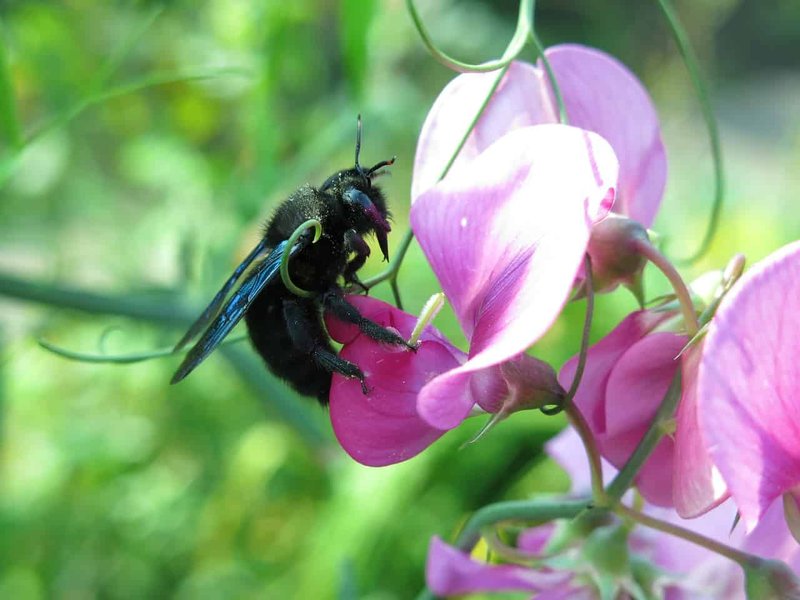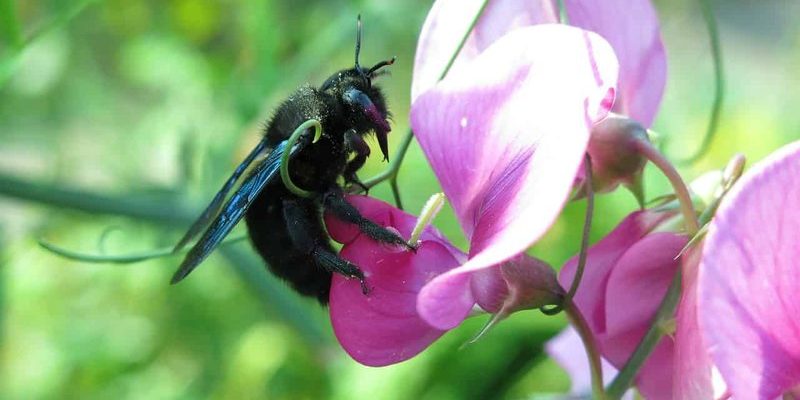
Let’s dive deep into the life and habits of carpenter bees. From their social structures to their impact on the environment, there’s so much to uncover. You might be surprised to learn that these bees are not only crucial for our ecosystems but also play a role in gardening and agriculture. So grab a cup of coffee, and let’s explore some of the most interesting facts about carpenter bees!
What Are Carpenter Bees?
Carpenter bees belong to the family Apidae and are often confused with bumblebees due to their similar sizes and shapes. However, here’s the thing: carpenter bees have a smooth, shiny abdomen, while bumblebees are fuzzy all over. These bees are typically large, ranging from about half an inch to a full inch long, and can vary in color from black to yellow.
You might be wondering why they’re called carpenter bees. The name comes from their unique ability to burrow into wood. Unlike other bee species that make hives, carpenter bees create individual nests by drilling holes into dead wood, bamboo, or even plastic. They’re like tiny carpenters with a knack for crafting intricate tunnels, which can be fascinating to observe in action!
The Life Cycle of a Carpenter Bee
Carpenter bees go through four main stages in their life cycle: egg, larva, pupa, and adult. Female carpenter bees are the primary builders; they’ll mate with males, then create a nest inside a piece of wood. Here’s how the process unfolds:
- Egg Stage: After the female creates a tunnel, she lays her eggs inside. Each egg is placed in a separate chamber.
- Larva Stage: Once the eggs hatch, the larvae feed on the stored pollen and nectar the mother supplies. This diet is crucial for their growth.
- Pupa Stage: After a while, the larvae form a cocoon and transform into pupae. This stage can last anywhere from a few weeks to several months, depending on environmental conditions.
- Adult Stage: Eventually, adult bees emerge from their cocoons, ready to continue the cycle.
The whole process showcases the incredible transformation that happens in nature. It’s also a reminder of the importance of wood and plant materials in their habitat.
The Role of Carpenter Bees in the Ecosystem
Honestly, carpenter bees play a vital role in pollination. While they might not produce honey like honeybees, they’re essential pollinators for various plants. As they visit flowers searching for nectar, their fuzzy bodies inadvertently pick up pollen, which helps fertilize other blooms. This makes them crucial to the growth of fruits, vegetables, and many flowering plants.
Furthermore, their burrowing activities can be beneficial for some ecosystems. By drilling into wood, they help decompose dead trees and other materials, turning them into nutrients that enrich the soil. It’s like they’re nature’s recyclers, making sure nothing goes to waste.
Common Misconceptions about Carpenter Bees
You might have heard that carpenter bees are aggressive or harmful, but that’s not entirely true. Here’s the thing: while they can sting, especially if threatened, females are usually quite docile. Males, on the other hand, don’t have stingers at all. They might buzz around you and even act a bit protective of their territory, but they cannot sting.
Another common misconception is that carpenter bees are destructive. Yes, they do tunnel into wood, but they typically prefer dead or decaying wood over healthy trees. This means they’re less likely to damage your home or garden than you might think. If carpenter bees take residence in your fence or shed, they might actually be helping break down that wood.
How to Identify Carpenter Bees
Recognizing carpenter bees isn’t too hard once you know what to look for. Here are some identifying characteristics:
- Appearance: Carpenter bees are large and typically have a shiny black abdomen. Their bodies are less hairy compared to bumblebees.
- Nesting Behavior: Look for perfectly round holes about the size of a dime in wooden structures. These are their nests!
- Behavior: Observe their flight patterns. Carpenter bees tend to hover around nesting areas, often chasing away intruders.
If you spot these traits in your garden or backyard, there’s a good chance you’ve got carpenter bees buzzing about!
How to Manage Carpenter Bees
If you’re worried about carpenter bees damaging your property, there are several ways to manage them effectively without harming the bees. Here’s what you can do:
1. Seal Holes: After the nesting season, seal any holes with wood putty or paint to prevent them from reusing old tunnels.
2. Choose Hardwoods: If you’re building something, choosing hardwood over softwood can discourage carpenter bees, as they prefer softer materials.
3. Use Deterrents: Natural deterrents like citrus sprays or vinegar can help keep carpenter bees at bay without harming them.
Remember, while it’s important to protect your property, it’s also vital to appreciate the role these bees play in our ecosystem.
Final Thoughts on Carpenter Bees
Carpenter bees are fascinating creatures that contribute much more to our environment than we often realize. They’re not just those big, buzzing insects hanging around your flowers; they’re crucial pollinators and nature’s little woodworkers. By understanding more about them, you can coexist peacefully while also protecting your home.
So, next time you see a carpenter bee, take a moment to appreciate its hard work! After all, every little creature has a role to play in maintaining the balance of nature. Understanding these facts about carpenter bees can deepen your appreciation for the natural world right outside your door.

